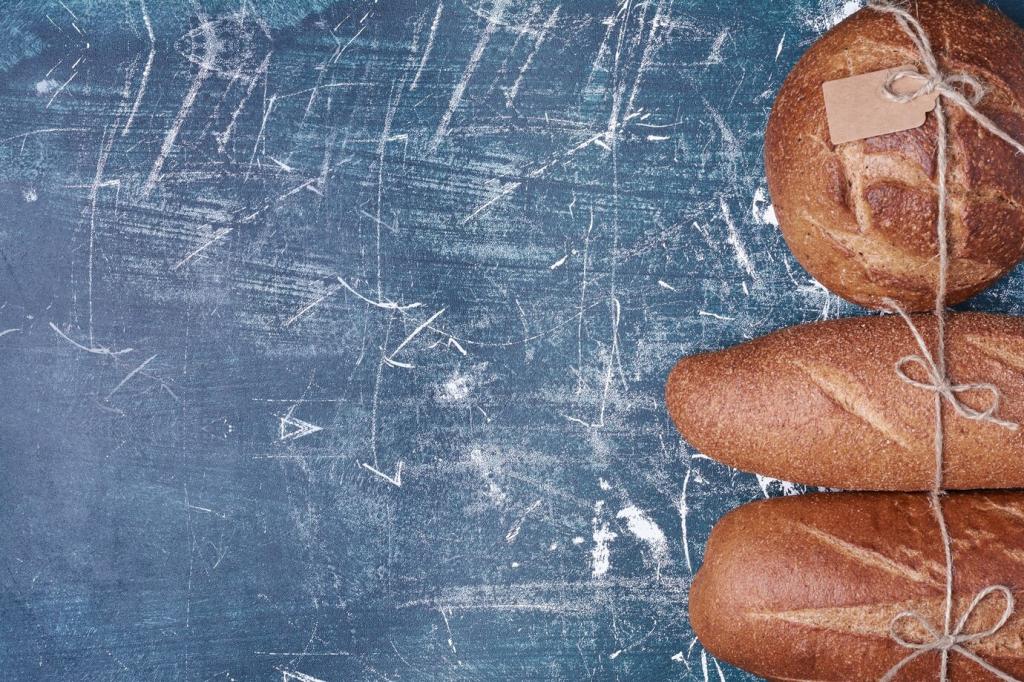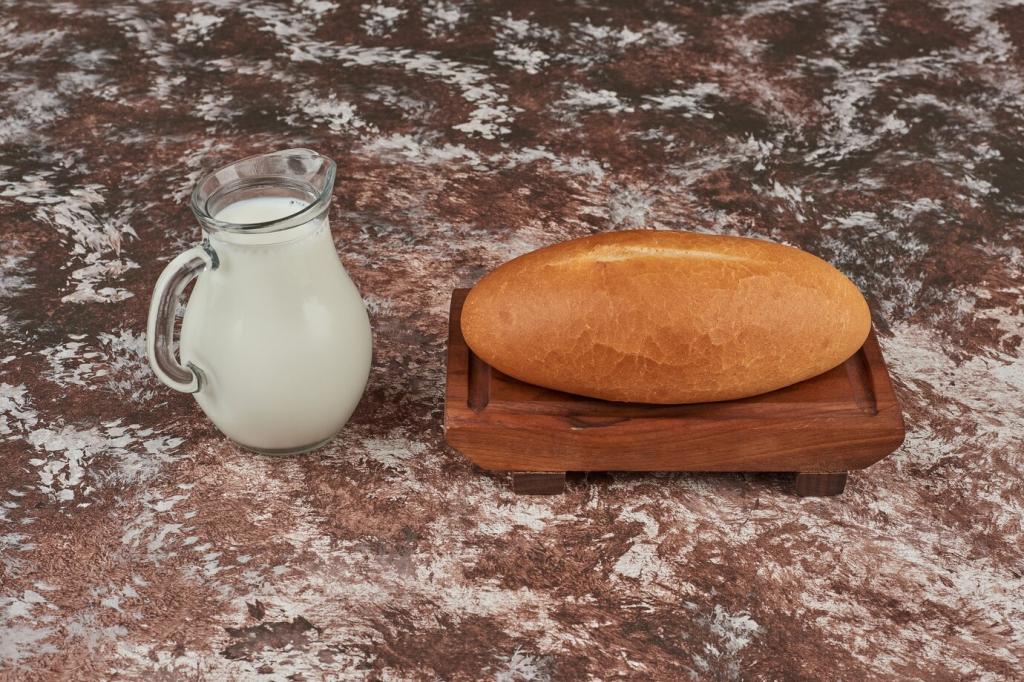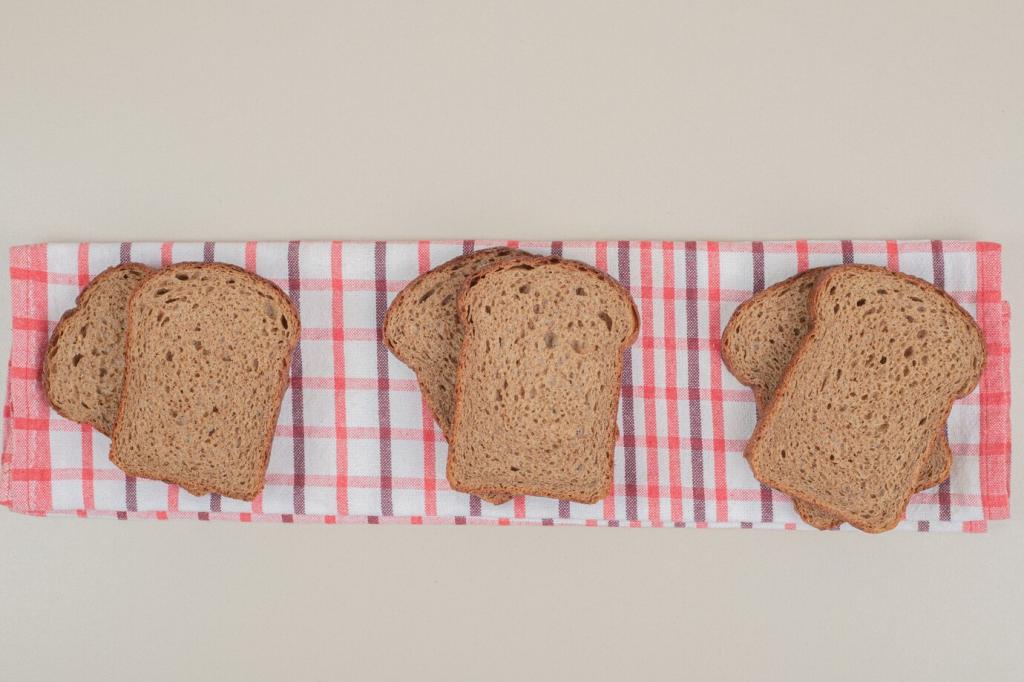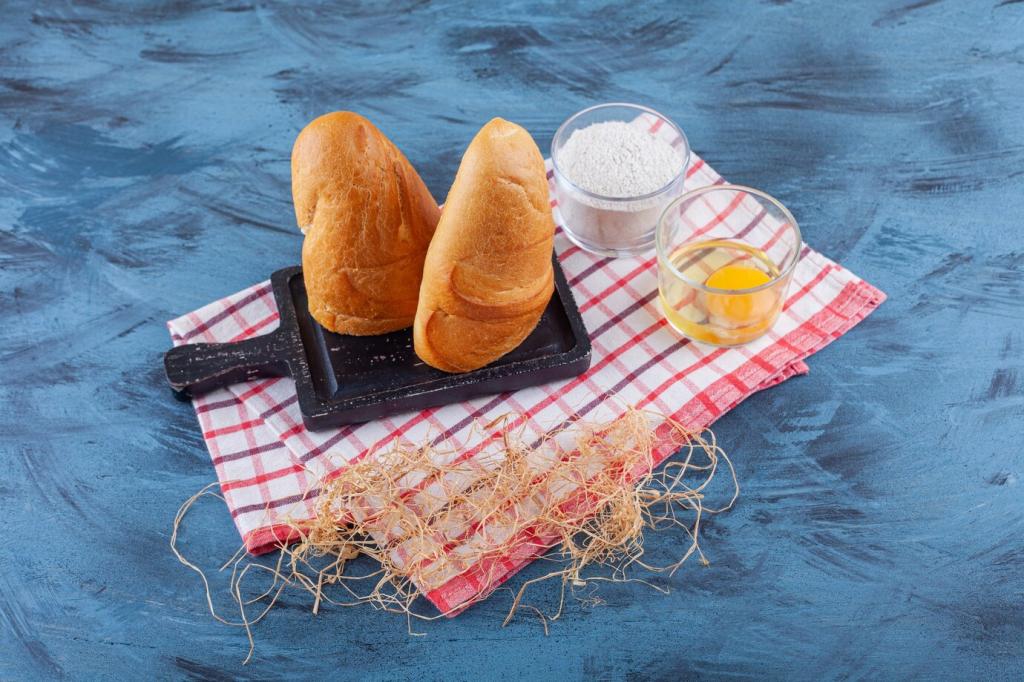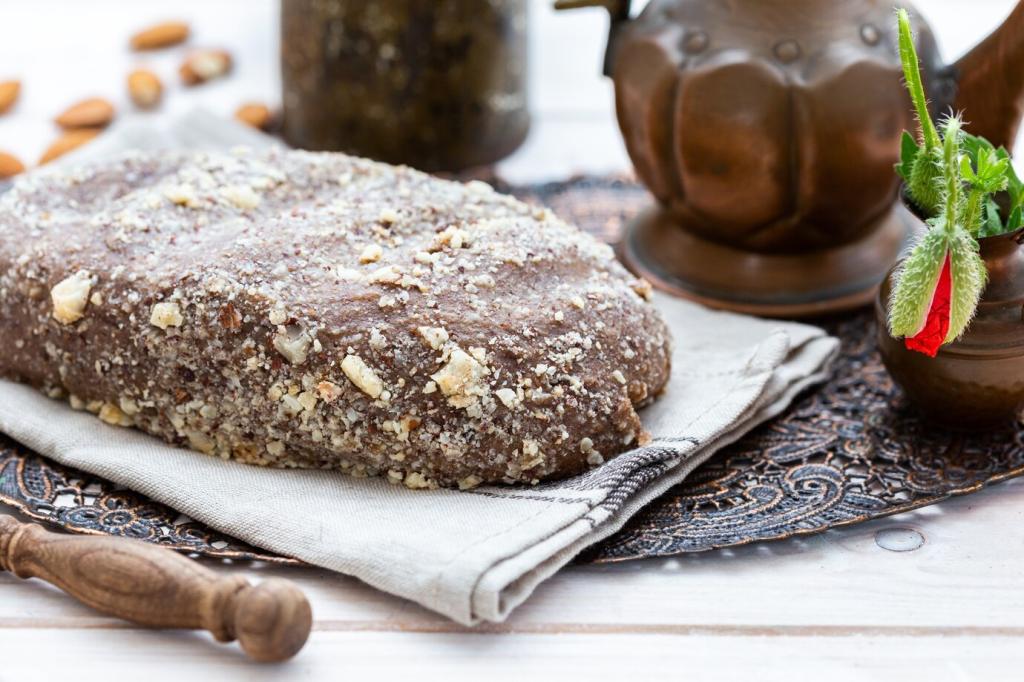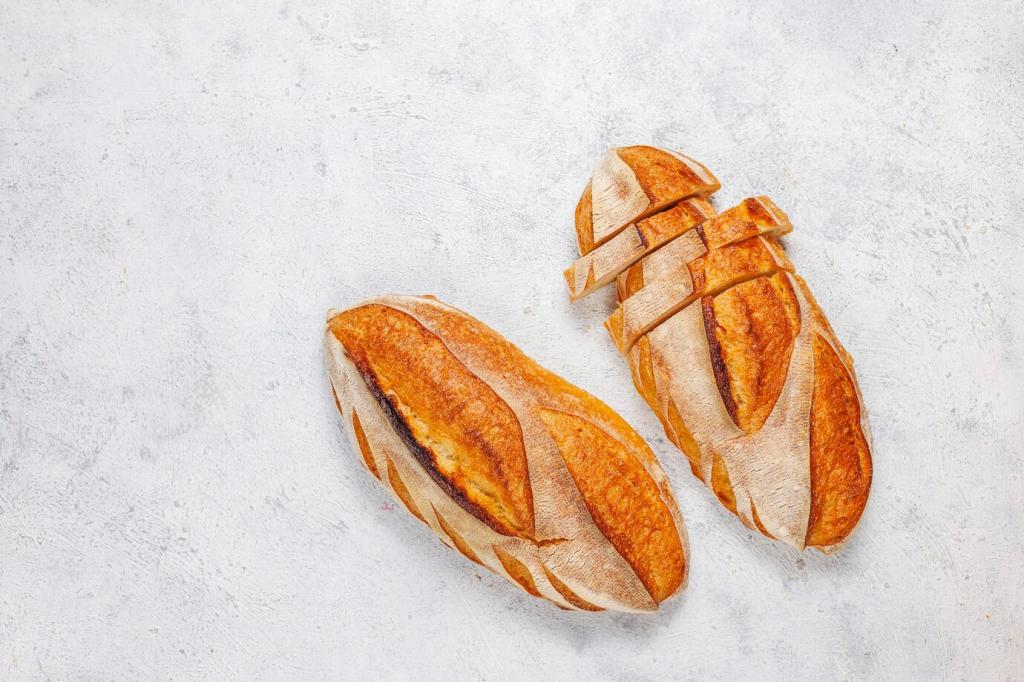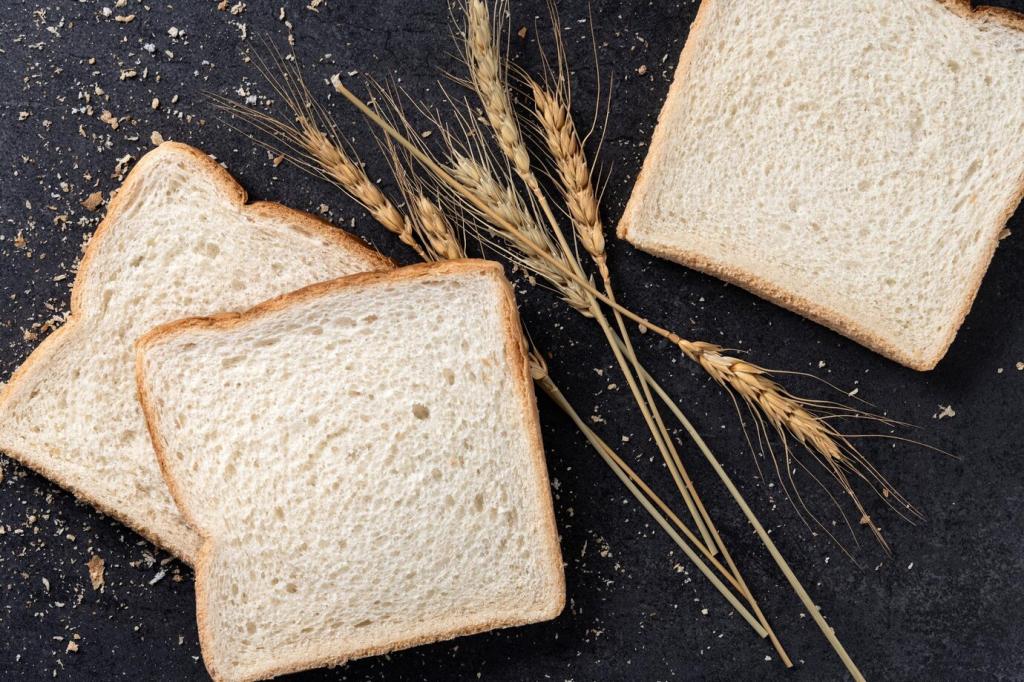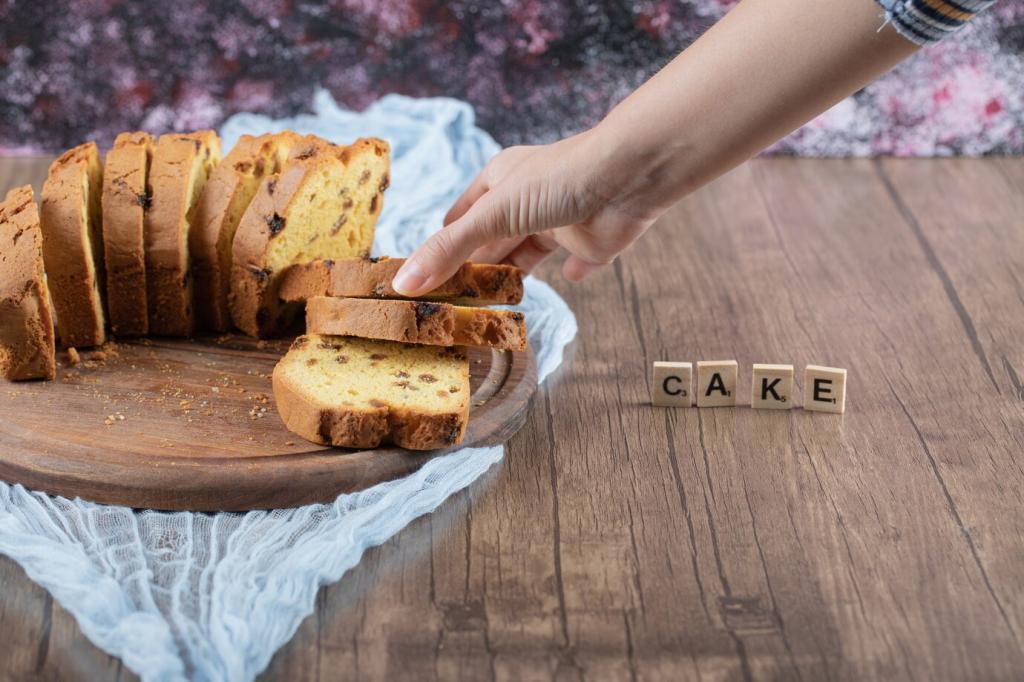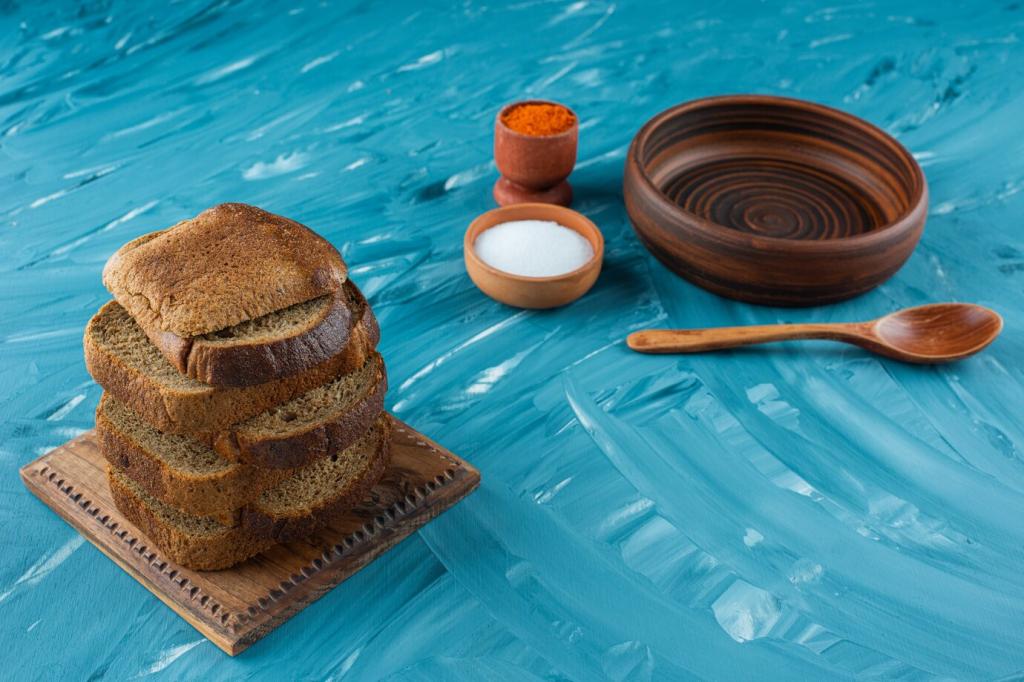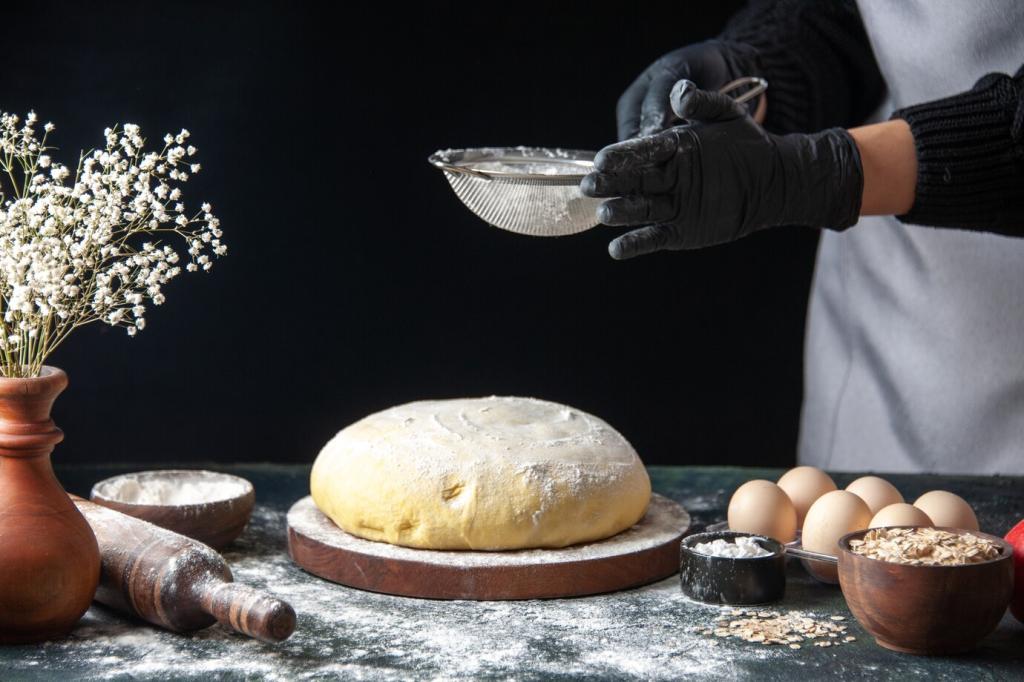Whole Grain Champions: Whole Wheat, Rye, and Spelt
Whole wheat brings bran and germ oils that deepen flavor and color. It absorbs more water and benefits from autolyse. Start with 20–40% in blends, then scale up. Share your hydration targets and favorite pairings for weeknight loaves.
Whole Grain Champions: Whole Wheat, Rye, and Spelt
Rye’s pentosans inhibit gluten yet add moisture and earthy sweetness. Sourdough fermentation enhances structure and shelf life. Try 10–30% rye for character without collapse. Post your crumb photos and fermentation times to help others fine-tune their rye blends.

